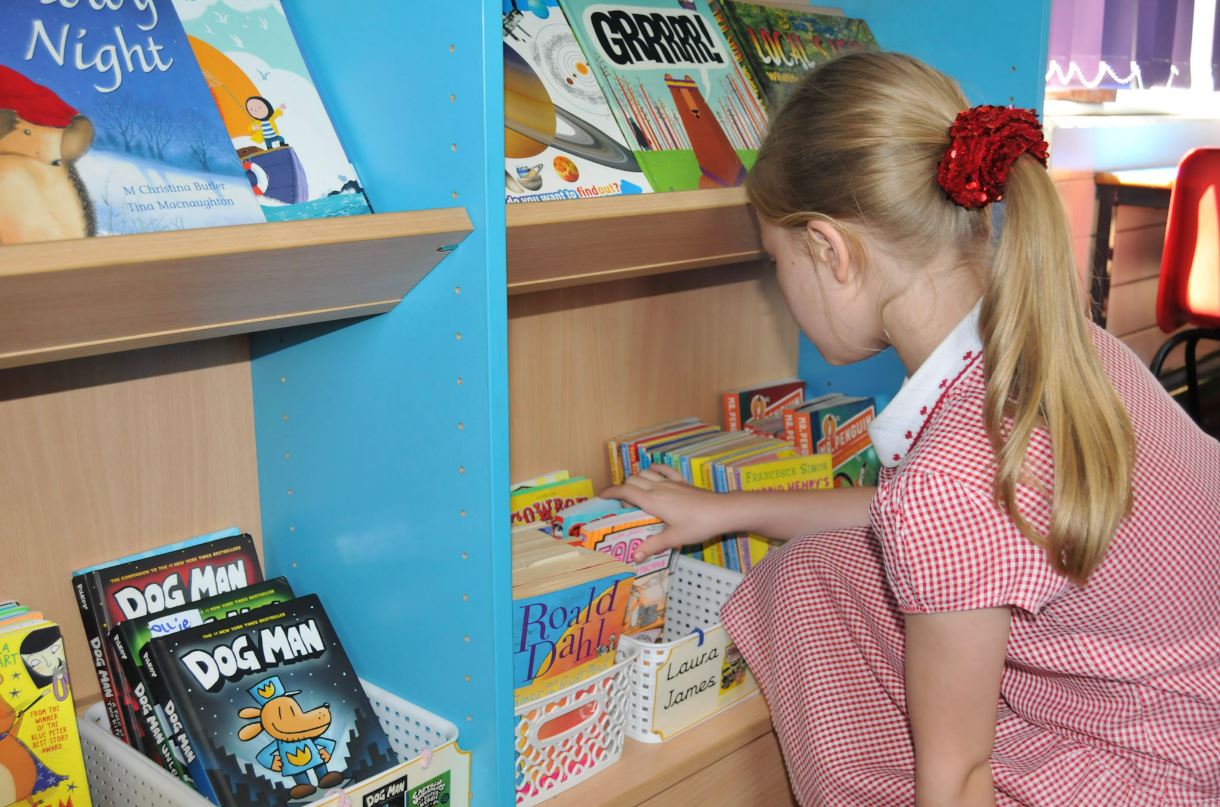Reading
Our reading vision is ‘To Love Reading’. At All Saints’ First School, we are determined that every child will learn to read and will meet, or exceed age-related expectations. We aim for children to read words and simple sentences by the end of Reception, become successful, fluent readers by the end of Key Stage one and develop a lifelong love of reading as they move through school.

Intent
At All Saints’ First School we strive to develop a love of reading. We build on the skills taught through Little Wandle Letters and Sounds Revised and continue to develop a love of books. Reading is at the heart of our curriculum and we are building time for children to share texts at an individual, group and whole class level in all of our subjects. High quality reading resources, reading aloud to the children, informal book talk, choice-led time to read and social class reading environments invite our children to engage and share the pleasures of reading. Our next step is wider curriculum………
Implementation
Our reading scheme (Y2-Y4) combines many different published schemes, including Project X, Bug Club, Rising Stars, Oxford Reading Tree and Rocket Phonics. We nurture a love of reading through stories and information books that children will really want to read. Our reading scheme includes fiction and non-fiction texts, poems, comics and plays. Our scheme also helps to develop wider reading skills, such as retrieval, inference and understanding of language.
Our reading scheme has different coloured book bands and match each child’s reading abilities. As the children progress through the book bands, they will read new spelling patterns, common exception words and there will be new vocabulary to discuss. Our reading scheme supports the teaching of reading in the classroom and ensures that when a child takes a book home they can read it successfully, build confidence and make progress.
Fiction Reading Texts for Parents KS1
Reading Strategies and Activities employed within school
- Individual reading
- Group reading - Children in year 2, 3 and 4 read once a week with a class teacher or teaching assistant.
- Whole class reading
- Additional phonics and reading support - In year 2, 3 and 4 we teach reading in the same way as KS1 for any children who still need to practise reading with decodable books. Children across year 2, 3 and 4, who are reading with decodable books, will complete the Little Wandle Rapid Catch-Up Programme or have precise daily intervention using Little Wandle Letters and Sounds Revised. Little Wandle Rapid Catch-Up initial assessment will identify specific gaps in phonic knowledge and match to the correct decodable book. Summative assessment will take place every four weeks to track progress
- Reading in the wider curriculum
- Reading for pleasure
- Teachers are readers and show a love of reading by reading aloud.
- Shared reading texts to support English units.
- Employing book talk (more informal, often spontaneous, and includes book-related play and recommendations).
- Adults reading aloud (reading aloud for pleasure and allows the children to access rich, challenging texts)
- Story time (class reader)
- Choice-led time to read
- Reading celebrated
- Planned poetry and non-fiction
- Involving parents- Secret Storyteller
- Class library areas (invite children to engage and share the pleasures of reading)
- Changing the books on offer- choice is critical
- Core texts identified in all year groups
- Library links


